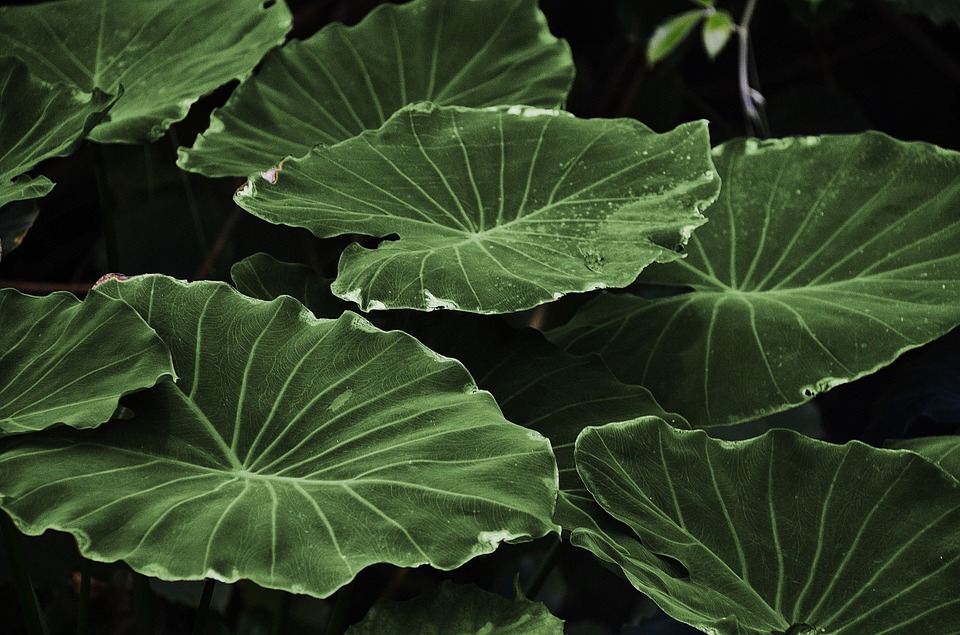A Timeline of Plant Evolution

The earliest plants were algae living in the oceans more than 700 million years ago. Modern-day blooming plants evolved from these aquatic algae that did not have stems or roots. Plant evolution on land has continued throughout the geologic eras of time. The plant evolution timeline includes: (1) the Pre-Cambrian Era, (2) the Paleozoic Era (divided into Cambrian, Ordovician, Silurian, Devonian, Carboniferous, and Permian Periods), (3) the Mesozoic Era (divided into the Triassic, Jurassic, and Cretaceous Periods), and (4) the Cenozoic Era (divided into Tertiary and Quaternary Periods).
Pre-Cambrian Era (4000-541 Million Years Ago) - Plants first appeared on land approximately 700 million years ago. Prior to that time, land was comprised predominantly of barren rock with sparse occurrence of algae, bacteria, and fungi. When
Cambrian Period (541-485 Million Years Ago) - Due to extremely high levels of carbon dioxide in the atmosphere, Earth's temperature would have been approximately 120 degrees during the Cambrian Period. Most plant life consisted of small, soft, marine plants, such as green algae . As terrestrial plants evolved, they cooled the climate and provided oxygen to pave the way for life to flourish on land. This led to the Cambrian explosion, a period of diversification in which many ancestors of modern-day plants and animals evolved.
Ordovician Period (485-443 Million Years Ago) - Because the earliest land plants were non-vascular, they did not have any way to conduct water. Therefore, terrestrial plants of this period lived primarily in wet environments. These early plants reproduced by spores.
Silurian Period (443-419 Million Years Ago) - The first vascular plants evolved during this period. Although most Silurian plants showed no differentiation of leaves, stem, and roots, the adaptation of vascular systems enabled land plants to stand upright and draw water upward through their structures. Lignin, complex organic polymers, was crucial for this adaptation. Scientists have recently discovered the presence of lignin in marine red algae, suggesting that even the earliest land plants possessed the potential for future adaptation to stand upright and conduct water.
Devonian Period (419-358 Million Years Ago) - The first recognizable soils developed during this time. Plants developed sexual organs for reproduction, stems with vascular tissue, woody tissue for structure, and stomates for respiration. Ecosystems, dominated by plants, included forests of large trees, and many plants reproduced by bearing seeds. Earth's climate continued to cool as carbon dioxide levels continued to drop, and oxygen levels increased due to the proliferation of terrestrial plants.
Carboniferous Period (358-298 Million Years Ago) - Plants continued to develop differentiated structures. Seed plants developed and colonized habitats where spore-producing plants could not flourish. These were gymnosperms: plants that produce seeds located on the leaves or the scales of cones. Gymnosperms, such as primitive conifer trees and ferns, appeared during this period.
Permian Period (299-251 Million Years Ago) - The climate dried, leading to the evolution of advanced conifers. Cycads and ginkgos appeared. Widespread forestation appeared in some regions.
Triassic Period (251-201 Million Years Ago) - Seed-bearing plants dominated over all others. Gymnosperms, such as cycads, ginkgos, and conifers, were the most prevalent plants of this period.
Jurassic Period (201.3-145 Million Years Ago) - The climate became wetter, leading to development of large jungles where conifers dominated the landscape. Flowering plants appeared during this period, but they played only a minor role among other plants.
Cretaceous Period (145-66 Million Years Ago) - Angiosperms, plants in which male or female reproductive organs are housed in a flower, proliferated and became the dominant plants. Modern-day trees appeared. Conifers continued to be important trees in colder regions. Ancestors of modern-day ferns evolved during the late Cretaceous period.

Cenozoic Era:
Tertiary Period (66-1.8 Million Years Ago) - Grasses evolved during this period leading to the development of vast savanna ecosystems. The proliferation of grasses provided food for large, grazing mammals and protection for small animals such as rodents. Conifers dominated in colder climates, while angiosperms (flowering and fruiting plants) dominated in tropical climates.
Quaternary Period (1.8 Million Years Ago - Present Day) - As the climate cooled, large forests died off, leaving open grasslands. This happened around 30 million years ago, and grasses flourished due to their ability to adapt to dry, arid conditions. Humans first appeared during the Quaternary period of the Cenozoic era. After living for thousands of years as hunter-gatherers, humans began to cultivate plants as a food source. Starting about 13,000 years ago, the earliest agriculture consisted of cultivating grass-type plants. These were grains such as wheat and barley. Later, ancient humans learned to cultivate corn, squash, beans, and new grains such as millet and rice.
Edited by Chad Kremp



